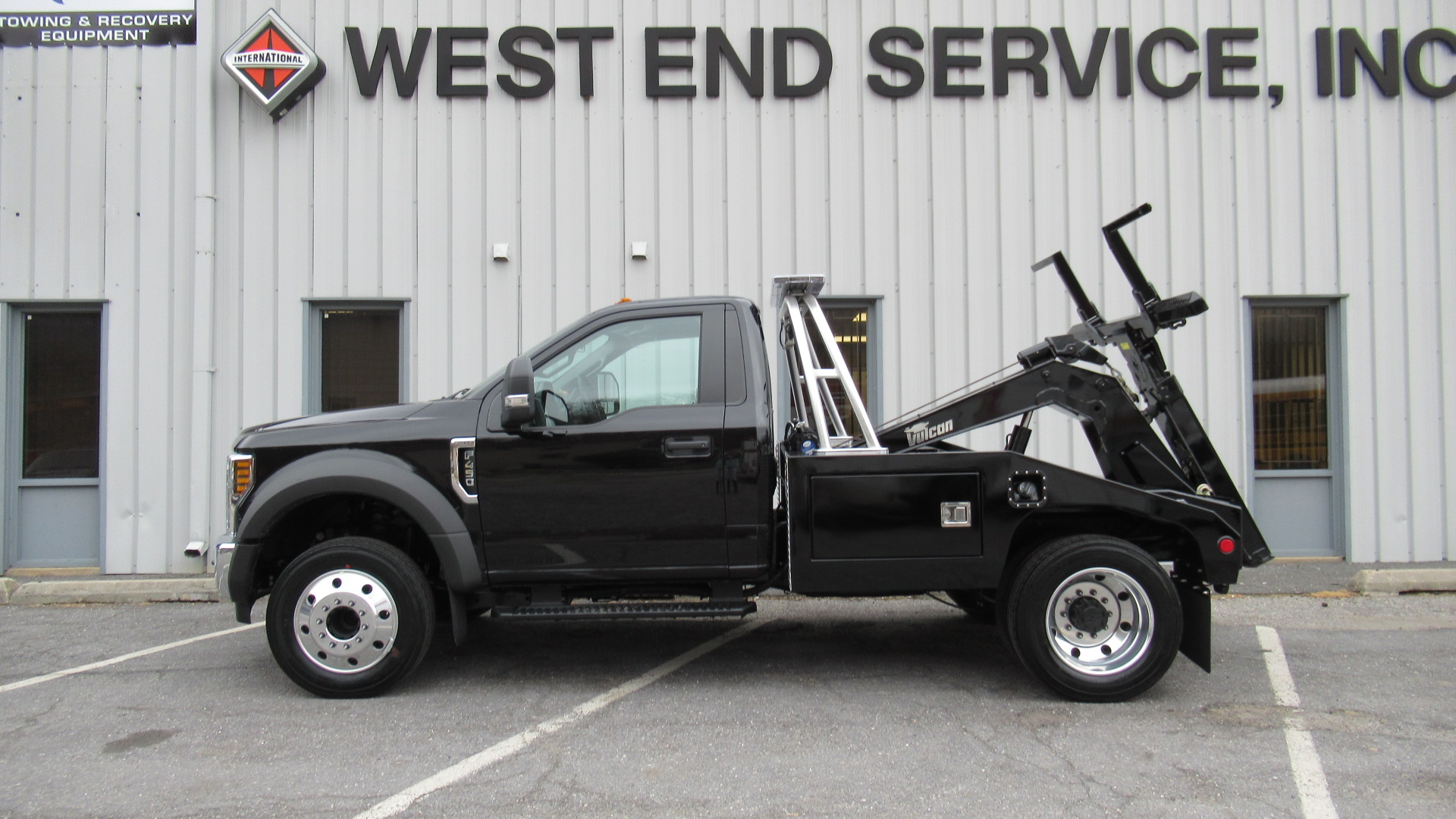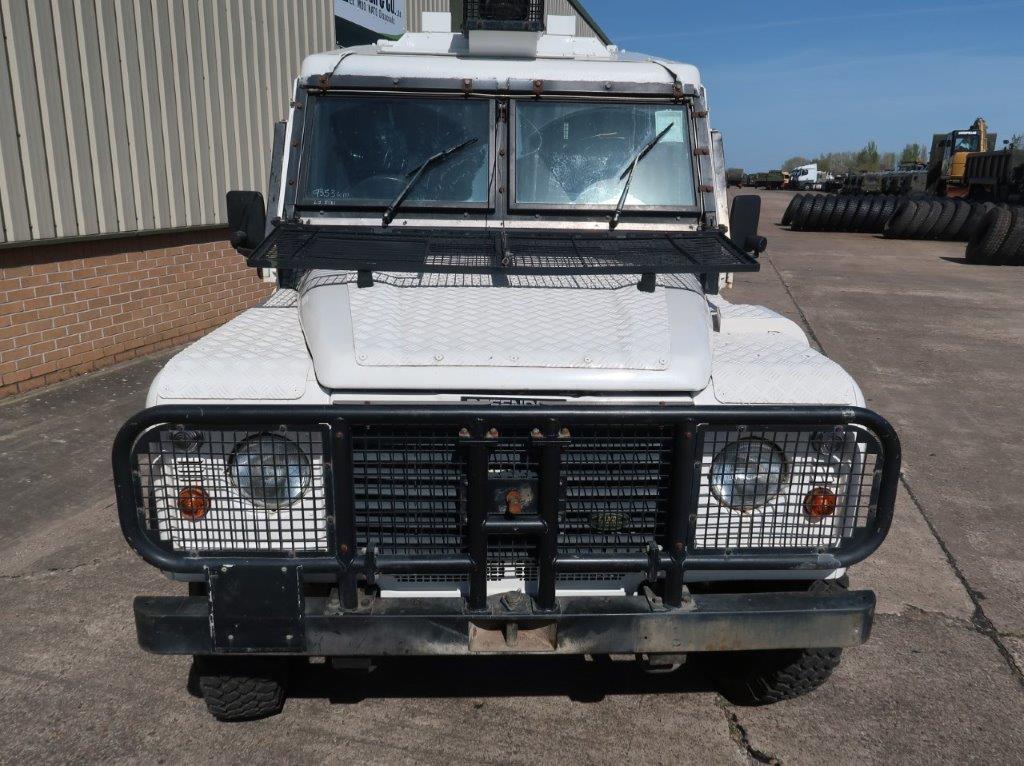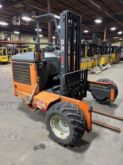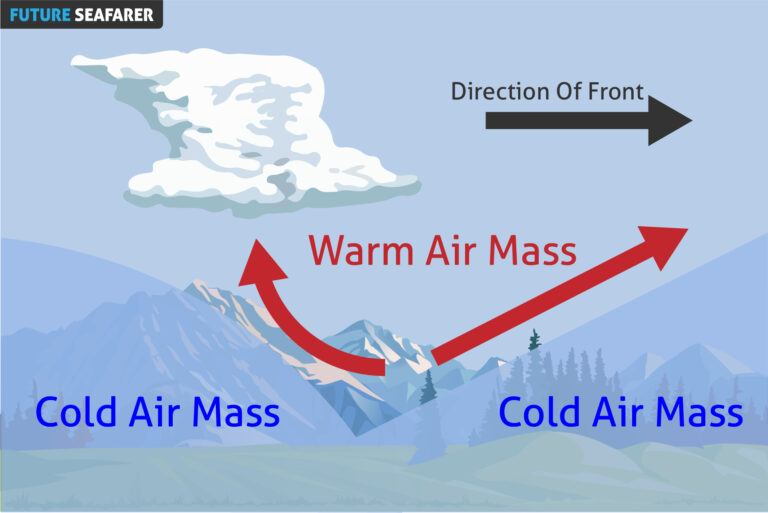Snatch Trucks For Sale: Your Comprehensive Guide to Acquiring the Right Recovery Vehicle
Snatch Trucks For Sale: Your Comprehensive Guide to Acquiring the Right Recovery Vehicle cars.truckstrend.com
I. Introduction: The Power and Purpose of a Snatch Truck
In the dynamic world of vehicle recovery, few pieces of equipment are as synonymous with efficiency and rapid response as the "snatch truck." Often referring to a light to medium-duty tow truck equipped with a wheel-lift system, sometimes called a "self-loader," these versatile vehicles are the backbone of countless towing operations, roadside assistance providers, parking enforcement agencies, and repossession specialists. Their ability to quickly and securely lift and transport disabled or illegally parked vehicles makes them an indispensable asset for businesses requiring swift, precise, and often urban-friendly recovery solutions.
Snatch Trucks For Sale: Your Comprehensive Guide to Acquiring the Right Recovery Vehicle
Acquiring a snatch truck is a significant investment, one that can dramatically impact a company’s operational capabilities and profitability. This comprehensive guide aims to demystify the process of finding and purchasing the right snatch truck, offering insights into their function, types, critical buying considerations, and practical advice to ensure a wise investment.
II. Understanding the "Snatch Truck": More Than Just a Tow Vehicle
While the term "snatch truck" might conjure images of swift repossessions, its primary function extends far beyond that niche. At its core, a snatch truck is engineered for rapid vehicle retrieval. Unlike flatbed tow trucks, which require loading a vehicle entirely onto a flat platform, or heavy-duty wreckers designed for large commercial vehicles, a snatch truck typically utilizes a hydraulic wheel-lift mechanism. This system extends, lowers, and then secures two wheels of the disabled vehicle (usually the front wheels for front-wheel-drive vehicles, or rear for rear-wheel-drive, with dollies often used for AWD/4WD), lifting them off the ground while the other two wheels remain on the road.
The key to their operation lies in their integrated design, often allowing a single operator to hook up and secure a vehicle in minutes, sometimes without even leaving the cab (hence "self-loader"). This makes them incredibly effective for:
- Roadside Assistance: Quick recovery of breakdowns.
- Parking Enforcement: Efficient removal of illegally parked vehicles.
- Impound Operations: Transporting vehicles to impound lots.
- Repossessions: Discreet and rapid recovery of defaulted vehicles.
- Light Accident Recovery: Clearing smaller accident scenes quickly.

III. Why Invest in a Snatch Truck? Key Benefits
For businesses in the towing and recovery sector, or those needing internal vehicle management, the benefits of owning a snatch truck are compelling:

- Efficiency and Speed: Their primary advantage. The quick hook-up time minimizes roadside exposure for operators and reduces traffic disruption, allowing for more jobs in less time.
- Maneuverability: Built on a light to medium-duty chassis, snatch trucks are more compact and agile than larger tow trucks. This makes them ideal for navigating congested city streets, tight parking garages, and residential areas where larger vehicles struggle.
- Cost-Effectiveness: Generally, snatch trucks have lower acquisition costs, lower fuel consumption, and reduced maintenance expenses compared to heavy-duty wreckers or even some larger flatbeds. This translates to better profit margins on light-duty calls.
- Versatility: While specialized for wheel-lift towing, they can handle a wide range of light-duty vehicles, from compact cars to smaller SUVs and pickup trucks. With the right accessories like car dollies, they can even safely tow all-wheel-drive (AWD) or four-wheel-drive (4WD) vehicles.
- Profitability: The high demand for rapid response towing and parking enforcement services ensures a steady stream of work, making a snatch truck a consistent revenue generator.
IV. Types of Snatch Trucks and Their Configurations
While the term "snatch truck" primarily refers to wheel-lift units, there are variations and important distinctions to consider:
- Wheel-Lift (Self-Loader) Trucks: This is the quintessential snatch truck.
- Integrated Wheel-Lift: The most common design for modern snatch trucks. The boom and wheel-lift are built into a single, integrated unit, often featuring an extendable boom that allows for quick and precise positioning. Many are "self-loading," meaning the operator can control the lift, extend, and retract functions from inside the cab or via a remote control.
- Conventional Wheel-Lift: Older models might have a separate boom and wheel-lift attachment, or a less automated system requiring more manual intervention.
- Light-Duty vs. Medium-Duty: Snatch trucks are typically classified by their Gross Vehicle Weight Rating (GVWR) and their actual towing and lifting capacities.
- Light-Duty: Built on lighter truck chassis (e.g., Ford F-Series, Ram, Chevy Silverado), ideal for cars and small SUVs.
- Medium-Duty: Built on more robust chassis, offering higher lift and tow capacities, suitable for larger SUVs, pickup trucks, and some commercial vans.
It’s important to differentiate these from flatbed tow trucks (where the entire vehicle is carried on a flatbed) and heavy-duty wreckers (designed for tractor-trailers and buses), as each serves distinct purposes in the towing industry.
V. What to Look for When Buying a Snatch Truck: Essential Considerations
A successful snatch truck purchase hinges on careful evaluation of several critical components:
- Chassis and Engine: This is the foundation. For used trucks, scrutinize mileage, maintenance records, and signs of excessive wear or rust on the frame. Look for a reliable engine (diesel often preferred for longevity and torque) and a robust transmission.
- Wheel-Lift System:
- Capacity: Ensure the lift capacity matches the type of vehicles you intend to tow.
- Hydraulics: Inspect all hydraulic lines, cylinders, and pumps for leaks, corrosion, or damage. Smooth, quiet operation is key.
- Controls: Test all controls (manual levers, remote, in-cab) for responsiveness and precision.
- Reach and Under-Reach: How far does the boom extend? How low can the wheel-lift go? This affects versatility.
- Boom and Winch: Even on a wheel-lift, a small boom and winch are crucial for light recovery or pulling vehicles out of ditches. Check winch capacity, cable condition (fraying, kinks), and proper drum operation.
- Power Take-Off (PTO): This system transfers power from the engine to the hydraulic pump. Ensure it engages smoothly and functions correctly.
- Auxiliary Equipment and Storage: Look for integrated toolboxes, adequate storage for chains, straps, dollies, and safety equipment. Dollies are essential for towing AWD/4WD vehicles or those with locked wheels.
- Safety Features: Proper lighting (amber warning lights, strobes), reflective markings, backup alarms, and fire extinguishers are not just good practice but often legally mandated.
- Controls and Ergonomics: A well-designed control panel and comfortable cabin can significantly improve operator efficiency and reduce fatigue.
- Maintenance Records (for Used Trucks): A detailed service history is invaluable, indicating how well the truck has been cared for and anticipating future maintenance needs.
- Regulatory Compliance: Be aware of federal DOT regulations (e.g., GVWR limits, brake inspections) and specific state or local licensing and operational requirements for tow trucks.
VI. New vs. Used Snatch Trucks: Making the Right Choice
The decision between a new and a used snatch truck often comes down to budget, immediate needs, and risk tolerance.
- New Snatch Trucks:
- Pros: Full warranty, latest technology and safety features, customizable specifications, no prior wear and tear, often easier to finance.
- Cons: Higher initial cost, rapid depreciation in the first few years, potential lead times for custom builds.
- Used Snatch Trucks:
- Pros: Significantly lower initial cost, immediate availability, less depreciation, a wider variety of models and configurations on the market.
- Cons: Potential for hidden mechanical issues, no warranty (or limited), accumulated wear and tear, potentially outdated technology, less customization.
Crucial Advice for Used Purchases:
- Professional Inspection: Always have a qualified mechanic specializing in heavy equipment or tow trucks conduct a thorough pre-purchase inspection. This is non-negotiable.
- Test Drive: Operate the truck under various conditions, testing the wheel-lift, boom, and winch extensively.
- VIN Check: Run a comprehensive vehicle history report to check for accidents, salvage titles, flood damage, or lien issues.
- Fluid Checks: Inspect all fluids (engine oil, transmission, hydraulic) for proper level and contamination.
- Rust and Frame Damage: Pay close attention to the frame, subframe, and critical attachment points for any signs of rust, cracks, or previous repairs.
VII. Where to Find Snatch Trucks For Sale
The market for snatch trucks is diverse, offering several avenues for potential buyers:
- Specialized Tow Truck Dealerships: These are often the best starting point. They offer new trucks from major manufacturers (e.g., Miller Industries’ Century, Holmes, Vulcan lines; Jerr-Dan, Chevron) and a selection of used, often reconditioned, units. They provide financing options, parts, and service.
- Online Marketplaces:
- Commercial Truck Websites: Sites like TruckPaper.com, CommercialTruckTrader.com, and IronPlanet.com (for auctions) list thousands of commercial vehicles, including tow trucks.
- General Classifieds: eBay Motors, Facebook Marketplace, and Craigslist can sometimes yield local deals, but require extra caution due to potentially less vetting.
- Auctions: Public auctions (municipal, police impound, government surplus) and private heavy equipment auctions can offer competitive prices, but often involve "as-is" sales with limited inspection opportunities.
- Direct from Towing Companies: Some larger towing companies regularly cycle out older fleet vehicles. This can be a good source for well-maintained used trucks, as they understand the equipment. Networking within the industry can uncover these opportunities.
VIII. The Buying Process: A Step-by-Step Guide
- Define Your Needs and Budget: What types of vehicles will you primarily tow? What’s your maximum budget, including potential repairs or upgrades?
- Research and Shortlist: Identify specific makes, models, and features that meet your criteria.
- Inspect Thoroughly: Whether new or used, a detailed inspection is crucial. For used, hire a professional if you’re not an expert.
- Negotiate Price: Don’t be afraid to negotiate, especially on used trucks. Be prepared to walk away if the deal isn’t right.
- Arrange Financing/Payment: Secure financing if needed, or prepare for a cash transaction.
- Handle Title and Registration: Ensure all paperwork is correct, including the title transfer, registration, and any necessary permits.
- Secure Insurance: Specialized commercial auto insurance with towing and recovery endorsements is essential.
IX. Operational and Maintenance Tips for Your Snatch Truck
Once acquired, proper operation and diligent maintenance are key to longevity and profitability:
- Regular Hydraulic System Checks: Monitor fluid levels, inspect hoses for leaks or cracks, and change hydraulic fluid and filters according to manufacturer recommendations.
- Winch Cable Care: Regularly inspect the winch cable for fraying, kinks, or damage. Replace it immediately if compromised. Always use proper winching techniques.
- Chassis and Suspension: Keep the chassis clean, especially after exposure to salt or harsh chemicals. Inspect suspension components for wear and alignment.
- Brake System: Ensure brakes are always in top condition, as you’ll be stopping with significant loads.
- Operator Training: Invest in comprehensive training for all operators, covering safety protocols, proper hook-up techniques, and vehicle limitations.
- Adhere to Weight Limits: Never exceed the Gross Vehicle Weight Rating (GVWR) or the wheel-lift/boom capacity. Overloading can lead to dangerous failures and accelerated wear.
X. Challenges and Solutions in the Snatch Truck Business
- Regulation & Licensing: Towing is a highly regulated industry. Research federal, state, and local laws regarding licensing, permits, and operational standards.
- Insurance: Obtaining adequate commercial insurance is critical and can be expensive. Work with an agent specializing in commercial vehicle and towing insurance.
- Training: Skilled operators are a must. High turnover or untrained staff can lead to accidents, damage, and lost revenue. Invest in continuous training.
- Competition: The towing market can be competitive. Differentiate your service through professionalism, quick response times, and excellent customer service.
- Customer Service: Dealing with frustrated motorists or vehicle owners requires patience and professionalism. Clear communication and transparent pricing build trust.
XI. Snatch Truck Pricing Guide (Illustrative Estimates)
The price of a snatch truck varies widely based on its make, model, year, condition, mileage, lift capacity, features, and additional equipment. The table below provides general illustrative estimates and factors influencing price. These are not definitive prices and should be used for budgeting purposes only.
| Category | Typical Price Range (USD) | Key Factors Influencing Price |
|---|---|---|
| Used Light-Duty Snatch Truck | $15,000 – $45,000 | Age (5-15+ years old), high mileage (150,000+ miles), condition of chassis/powertrain, wear on wheel-lift, brand, basic features. |
| Used Medium-Duty Snatch Truck | $35,000 – $75,000 | Age (5-10+ years old), moderate mileage (100,000-250,000 miles), robust chassis, higher lift capacity, hydraulic condition, brand. |
| Refurbished/Reconditioned Used | $50,000 – $100,000+ | Professional overhaul of hydraulics, engine, transmission; new paint, lights; often with a limited warranty from seller. |
| New Light-Duty Snatch Truck | $80,000 – $130,000+ | Latest model year, full warranty, brand (Century, Jerr-Dan, etc.), chassis type (gas/diesel), specific lift capacity, optional features. |
| New Medium-Duty Snatch Truck | $120,000 – $180,000+ | Latest model year, heavier chassis, higher lift/tow capacity, advanced hydraulic systems, remote controls, premium brands. |
Note: Prices do not typically include sales tax, title, registration fees, or the cost of essential accessories like dollies, safety equipment, or tools, which can add several thousands of dollars. Always get a detailed quote from sellers.
XII. Frequently Asked Questions (FAQ) About Snatch Trucks
Q1: What’s the average lifespan of a snatch truck?
A1: With proper maintenance, the chassis can last 300,000 to 500,000+ miles. The recovery equipment (wheel-lift, boom, hydraulics) can last 10-20 years or more, though components may need replacement over time.
Q2: Do I need a special license to operate a snatch truck?
A2: For light to medium-duty snatch trucks (under 26,001 lbs GVWR), a standard Class C (or equivalent) driver’s license is typically sufficient in most states. However, specific state or local regulations might require additional endorsements, permits, or specialized towing licenses. Always check local Department of Motor Vehicles (DMV) or transportation authority rules.
Q3: How much does insurance typically cost for a snatch truck?
A3: Insurance costs vary widely based on location, coverage limits, driving record, and the specific services offered. Expect commercial auto insurance for a tow truck to be significantly higher than a standard personal vehicle policy, potentially ranging from $5,000 to $15,000+ per year.
Q4: What are the most reliable snatch truck brands?
A4: Leading manufacturers known for quality and reliability include Miller Industries (which owns Century, Holmes, and Vulcan brands), Jerr-Dan, and Chevron. These brands have strong dealer networks and readily available parts.
Q5: Can a snatch truck tow an all-wheel-drive (AWD) or four-wheel-drive (4WD) vehicle?
A5: Yes, but it requires the use of car dollies on the wheels that are not lifted by the wheel-lift. This ensures that all four wheels are off the ground, preventing damage to the AWD/4WD drivetrain. Never tow an AWD/4WD vehicle with only two wheels on the ground.
Q6: What’s the difference between a wheel-lift and a self-loader?
A6: Often, these terms are used interchangeably. A "wheel-lift" describes the mechanism that lifts the wheels. A "self-loader" specifically refers to a wheel-lift system that can be operated largely from inside the cab, or with a remote, allowing for quick, single-operator hook-ups without the operator needing to manually position equipment under the vehicle from the outside. Most modern snatch trucks are self-loaders.
XIII. Conclusion: Driving Your Business Forward with the Right Snatch Truck
Investing in a snatch truck is a strategic decision for any business involved in vehicle recovery, roadside assistance, or property management. These agile and efficient vehicles are profit centers, capable of handling a high volume of light to medium-duty calls quickly and safely. By thoroughly understanding the types available, meticulously evaluating their features, and adhering to a disciplined buying process—whether opting for a new, state-of-the-art model or a well-inspected used unit—you can secure an asset that will reliably drive your operations forward for years to come. With proper maintenance and skilled operation, a snatch truck is not just a piece of equipment; it’s a foundation for a thriving, responsive service.






